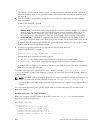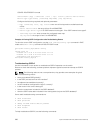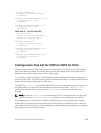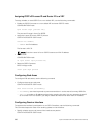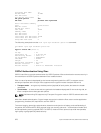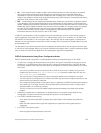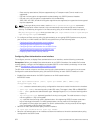
Assigning Area ID on an Interface
To assign the OSPFv3 process to an interface, use the following command.
The ipv6 ospf area command enables OSPFv3 on an interface and places the interface in the
specified area. Additionally, the command creates the OSPFv3 process with ID on the router. OSPFv2
requires two commands to accomplish the same tasks — the
router ospf command to create the
OSPF process, then the network area command to enable OSPFv2 on an interface.
NOTE: The OSPFv2 network area command enables OSPFv2 on multiple interfaces with the single
command. Use the OSPFv3
ipv6 ospf area command on each interface that runs OSPFv3.
• Assign the OSPFv3 process and an OSPFv3 area to this interface.
CONF-INT-type slot/port mode
ipv6 ospf process-id area area-id
– process-id: the process ID number assigned.
– area-id: the area ID for this interface.
Assigning OSPFv3 Process ID and Router ID Globally
To assign, disable, or reset OSPFv3 globally, use the following commands.
• Enable the OSPFv3 process globally and enter OSPFv3 mode.
CONFIGURATION mode
ipv6 router ospf {process ID}
The range is from 0 to 65535.
• Assign the router ID for this OSPFv3 process.
CONF-IPV6-ROUTER-OSPF mode
router-id {number}
– number: the IPv4 address.
The format is A.B.C.D.
NOTE: Enter the router-id for an OSPFv3 router as an IPv4 IP address.
• Disable OSPF.
CONFIGURATION mode
no ipv6 router ospf process-id
• Reset the OSPFv3 process.
EXEC Privilege mode
clear ipv6 ospf process
Open Shortest Path First (OSPFv2 and OSPFv3)
665




